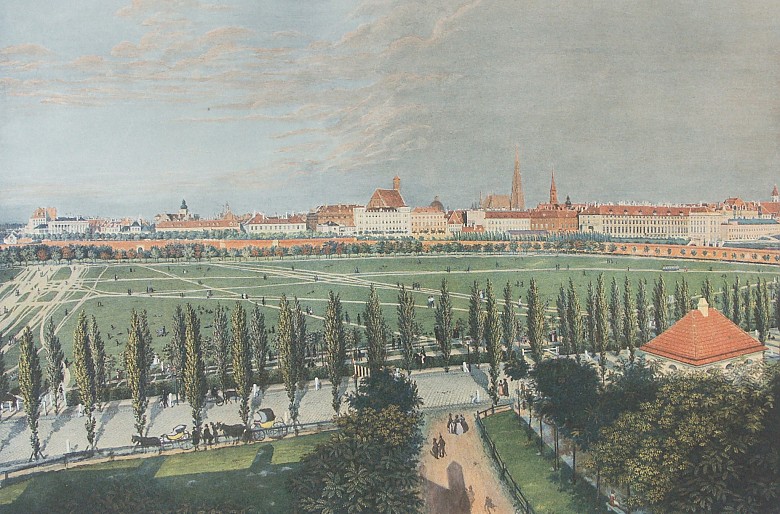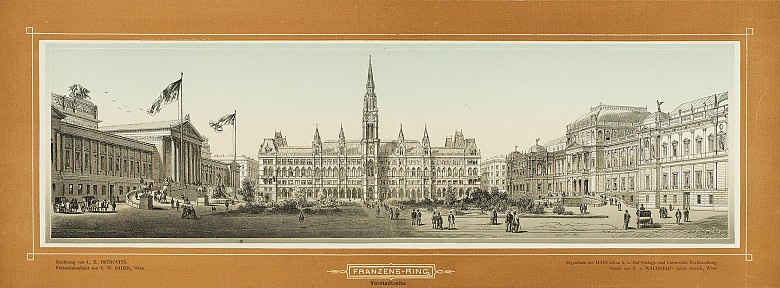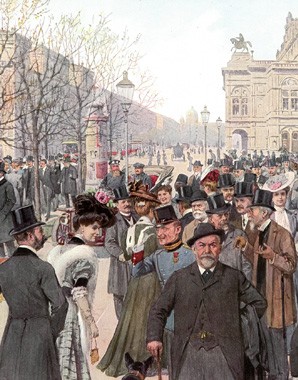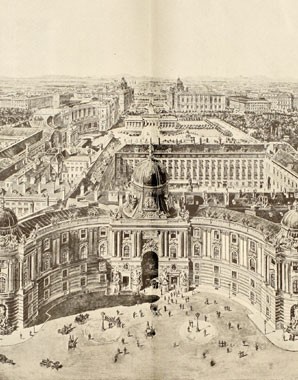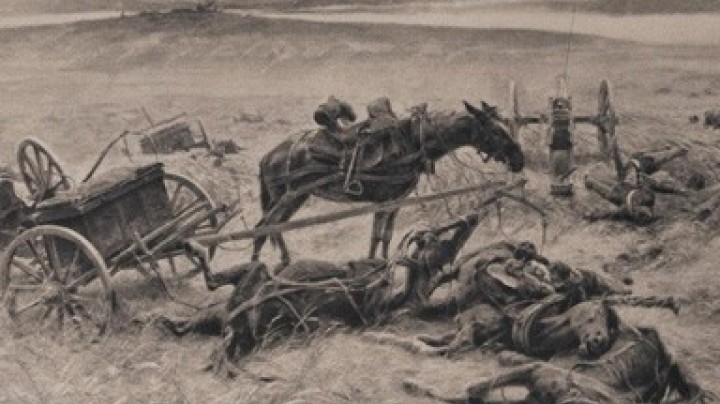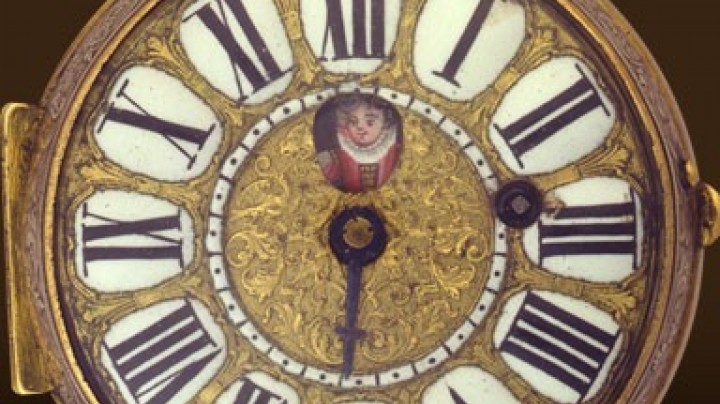Military drill must continue!
Against the will of the army a former military exercise ground becomes the showplace of liberal bourgeois self-assurance immortalized in stone.
The northern section of the Ringstrasse, later lined by grandiose public buildings, originally had a different use: on the part of the glacis bordering the suburb of Josefstadt the army had its exercise and parade ground, and was intent on continuing to use it. Muddy, dark and often cordoned off, it was a hindrance to the inhabitants of the Josefstadt on their way to the inner city.
‘Almost impossible to take in at one glance, this vast expanse was a desolate wasteland. A sandy desert in dry weather, the main source of dust accumulating in the city, in wet weather a quagmire or a frozen pond’, wrote Cajetan Felder (mayor of Vienna from 1868 to 1878) in his memoirs.
At his instigation the Rathaus (City Hall) and the Rathauspark were constructed on this site from 1873 to 1884. Together with the Reichsratsgebäude (Parliament) and the University it constituted the bourgeois equivalent to the imperial Hofburg. Other buildings on this site included the Korpskommando (a military headquarters, today the site of a university building) and the Palace of Justice.
A certain military emphasis to the Ringstrasse remained at least in the section near the Hofburg: the fence of metal palings set on a high plinth that separates the Burggarten, Volksgarten and Heldenplatz from the boulevard was intended for defensive purposes: the plinth was to give soldiers cover and a place to fire from.
